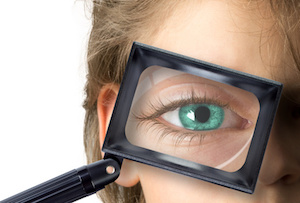 Children’s eyes are precious. Most are born with perfect vision and eye function, but increasingly, children and young people are suffering from eye strain and damaged vision, according to research.
Children’s eyes are precious. Most are born with perfect vision and eye function, but increasingly, children and young people are suffering from eye strain and damaged vision, according to research.
The number of Kiwis seeking help for digital eye strain is growing each year, with some studies saying that up to 70 percent of device users are affecting their eyesight by using them too often.
Children are particularly at risk are between due to the long hours on screens at school and at home, including leisure time. this damage shows up as blurred vision, red or dry eyes and headaches. Reading tiny print on small screens can also stress the eyes.
Optometrists are concerned about the blue light emitted by devices.
We all grew up being told ‘Don’t sit too close to the TV’, and the same rings true, even though there are many new devices available. Just as we need to protect our skin in the sun, our eyes need a rest from constant blue light. Every 20 minutes, your eyes need to refocus on a faraway point for a few minutes, and just like the rest of us benefits, eyes appreciate rest and fresh air too. We often blink less when we are looking at lighted screens, due to our increased focus, so remind children to blink regularly. Children should not be taking blue light emitting devices to bed – not only does it interrupt sleep patterns and melatonin production (a hormone which encourages sleep), it keeps the eyes overworking. Reading a book is far more relaxing for the body and the eyes.
Devices can be very helpful and entertaining for children, but there need to be regular breaks and time limits. Remember that they use screens a lot at school and even kindergarten, so ensure they only use them at home for short bursts of time, and if you see your children’s eyes looking tired or red, remove their device.









Join the Discussion
Type out your comment here:
You must be logged in to post a comment.